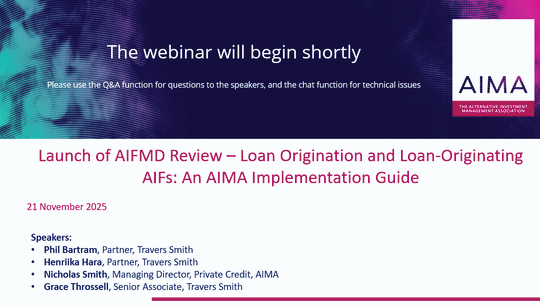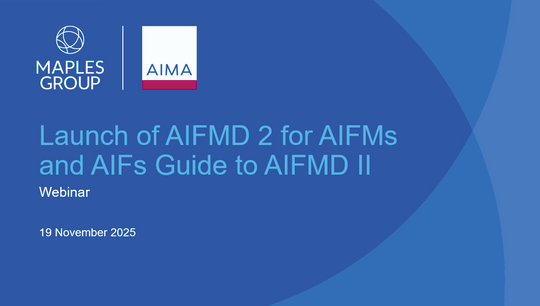AIFMD: How has the insurance market responded?
By Matthew Hughes, Divisional Director, Financial & Professional Risks, Arthur J. Gallagher
Published: 30 June 2015
The insurance landscape for alternative investment fund managers (AIFMs) has had an unparalleled 12 months — with market and regulatory forces combining to create a positive risk transfer environment few may have predicted when the shift in capital requirements first came. In the London insurance market, we have witnessed an increase in the number of insurers keen to participate in the hedge fund and wider AIFM space, and this heightened competition, coupled with a relatively benign claims environment, has had a direct impact on the rates insurers charge and the scope of cover afforded by the insurance contract.
Understandably, much of the market talk over the last couple of years has been wholly focused on the implementation of the Alternative Investment Fund Management Directive (AIFMD) and what impact this would have. Three key questions repeatedly sprang to the fore:
- Would insurers agree to offer contracts that cover the perils as prescribed by Article 12 of the directive?
- Would firms decide to adopt the ‘additional own funds’ route rather than using professional indemnity insurance as the mechanism to meet the capital requirements of the directive?
- And if insurers were to see an uptick in the levels of limit purchased in the professional indemnity insurance (PII) space, would they look to secure increased rate as their product becomes of greater value?
The first question has been answered emphatically by London market insurers: all the major players have accepted the addition of language into the contract which confirms cover is extended to include the perils prescribed. The addition of this language provides AIFMs with a welcome, straightforward, black-&-white answer to the question ‘does your professional indemnity insurance provide cover to the scope required by the directive’?
From what we have seen over the last 12-18 months, the answer to question two is somewhat less clear cut, and generally depends upon the size of the AIFM. For larger investment managers with broader balance sheets, using PII to protect investors from damage and meet the requirements of the directive does not make sense — with the limit deemed appropriate set at 0.9% of AUM for claims in aggregate per year and 0.7% per individual claim, versus the 0.01% of AUM deemed appropriate if using additional own funds. But for smaller firms, with lower AUM and limited spare cash, the insurance risk transfer route works for them.
There are some important elements to consider when pursuing the insurance route, however. For example, the requirement to hold the value of your self-insured retentions (also known as excess of deductible) separately on your balance sheet, and reload this provision in the event of a claim. Other key questions include:
- Do we have sufficient ‘wriggle room’ within the PII limit to allow for increase in AUM?
- What if our limit is eroded or exhausted — would that automatically put us in breach of the requirements of the directive?
- What if we have AIF assets and non-AIF assets covered under the same policy and the limit is eroded or exhausted by a non-AIF claim — would this lead to us being in breach of directive?
- Similarly, if we buy a PII policy and share this limit with crime cover, and the limit is eroded or exhausted by a crime loss, would that put us in breach of the requirements?
The good news is that some of these considerations and concerns, which may have deterred AIFMs from opting for the insurance route, may warrant reconsideration now that the market has responded and adjusted to the implementation of the directive.
With regards to the latter three points above, we have seen insurers agree to add reinstatement provisions at relatively modest additional premiums — and, in some instances, no additional premium at all. This provides AIFMs with the comfort that, in the event a loss is suffered, they are not in breach of the requirements of the directive.
As for the last of the three initial questions — whether insurers have looked to get increased rate as a result of uptick in PII levels purchased — the answer is ‘no’. Whilst we have previously stated that many larger firms are not using PII to meet the capital requirements of the directive, this does not mean they are failing to buy PI insurance — merely not buying it to the levels prescribed. Feedback that we have received from clients is that investors do still ask if you carry PI insurance, and answering no to that question can prompt them to walk away, even if you hold additional own funds to cover any potential liability risks arising from professional negligence.
This continued demand for PII is thus helping maintain a healthy level of competition and prevent rate increases from a client perspective. Furthermore, following the global financial crisis, a number of insurers who previously had a large exposure to global financial institutions, banks in particular, have looked to diversify their portfolio. One of the ways they have done this is by entering the investment management sector, which is seen as a logical next step with the added benefit of a relatively benign claims environment in comparison to other industry sectors within FI market.
In fact this movement of existing insurers into the AIFM space, accompanied as it has been by the introduction of new insurers looking to underwrite risk in this space, has created one of the most competitive environments in London for many years. London-based insurers are also beginning to look at US-domiciled investment managers — a market they have been out of for a number of years — because competition has led to a decrease in the value of their portfolios and this income needs to be replaced.
What this convergence of various market forces means is that not only is the commercial insurance market for investment managers extremely competitive at the present time but it can also meet the requirements of AIFMD. And unless there is a systemic claims scenario affecting all investment managers, or a sudden reduction in the market capacity available for this sector, we do not anticipate this changing in the short term. All of which spells good news for insurance buyers.
[email protected]
www.ajginternational.com
The above information is intended for general guidance only.







